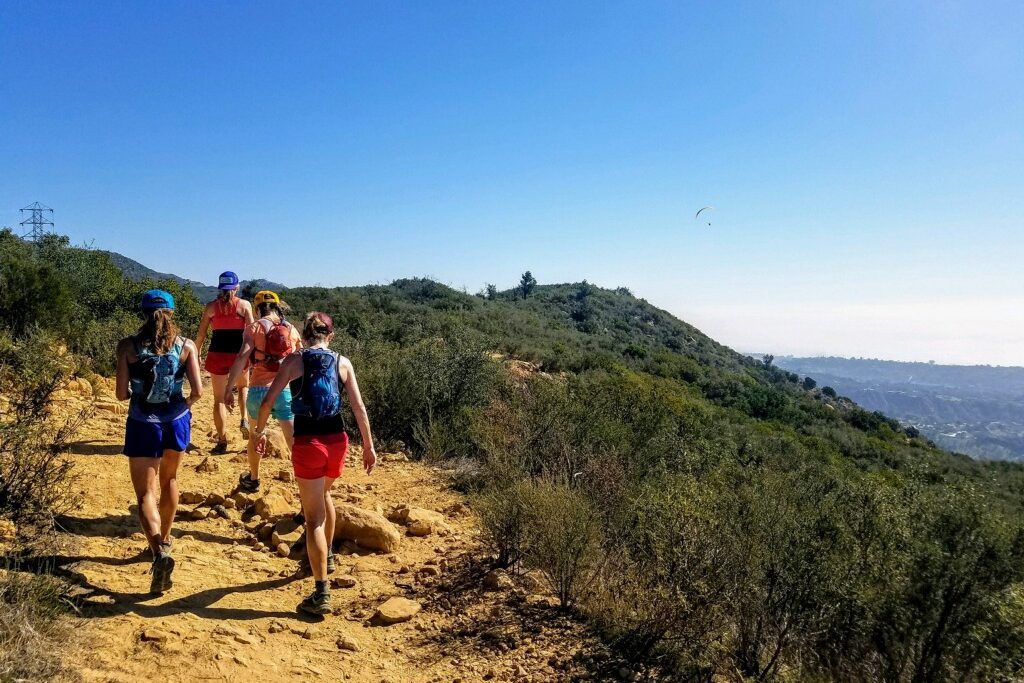Main Menu
Spidey Sense x 2

Krissy Moehl is an ultramarathon runner, coach, author, public speaker and race director. In her 15-year career, she has run more than 100 races. She has 55 female wins and 2 outright wins. Moehl blogs about her running at www.KrissyMoehl.com and hails from the Pacific Northwest. Her book, Running Your First Ultra launched in December 2015.
Share This Article!


By: Krissy Moehl
Finding ourselves in tune with the world around us and ourselves is a gift that running shares with anyone that participates… if we listen. Another name I’ve given this gift is having a Spidey-Sense. My Ma calls it “listening to your gut.” It’s an intense, innate knowing. The Spidey-Sense can work both externally and internally. Below I’ve applied it to safety on the run and to knowing where you are at in your training.

I’ve wondered if it is luck that in 18+ years of running trails and roads I have, thankfully, never had an incident where I felt my safety was at risk. Good practices engrained from an early age keep me alert when necessary and trained that gut-check response. There have definitely been moments where I wondered, the hair on the back of my neck prickled, and my Spidey-Sense went into overdrive. I grossly checked my surroundings in search of what triggered the pit in my stomach and moved onto a place where I didn’t feel alarmed. If well practiced, safety can be a sub-conscious act that one intuitively does as they move through the day. I believe in luck, but also that this instinct has kept me out of harm’s way. Whether learned or instinctual it is important to be aware and think ahead every time we run to ensure our safety.
Some tips to trail time safety:
- Don’t be predictable – Run at different times each day. Run different routes. It adds variety to your running, keeps the activity fresh as well as eliminates any dependability that you are out of your house at a certain time or on the same route.
- Acknowledge people as you pass. Making eye contact with someone, smiling and letting them know that you see them will ensure they see you too. Whether it is a friendly hello as you approach from behind and then eye contact as you pass, or looking up as you approach and nodding to let someone know you are aware of their presence. This increases awareness for everyone, can add a positive bit of energy to each person’s outing, and it also reduces chances of someone sneaking up or startling you.
- If running with music, run with only one earbud so that you remain aware of your surroundings.
- Let a trusted friend or family member know your intended route and when you expect to be home.
- Learn and get familiar with different routes with groups of people before going solo.
- (Social Media) Share your route after you run. Live sharing where you are running has its advantages and is fun to bring people along for the run, but unfortunately it also leaves you exposed. It is known that you are away from your home and depending on where you are running, certain routes could be targeted.
There are times I rush out the door distracted by life and a crazy to do list. I feel the need to squeeze in a run between this call and that project and I know that I’m not as aware as I should be. It is in those moments that I rely on these instinctual practices to help take care of me should a situation arise. When I’m emotional/distracted/in-my-head and not as in tune with the actual run, I try to make sure I follow a route I know and am comfortable with, I carry my phone in case of emergency and try to acknowledge anyone that I pass. And at some point, when I finally arrive mentally into the actual physical movement, I take a deep breath and look around to appreciate my surroundings and ability to move.

If you identify as a runner I am going to guess that you love to run and you acknowledge that running brings so much more than just physical activity and fitness. It is fundamental that we take care of our bodies so that we can always have that movement. The Spidey-Sense also talks to us when it comes to over or under training. The more we listen to our internal cues the better understanding we will have for how our training is going and, more importantly, how our body is responding to the training. I feel like it boils down to a core-level-knowing of when to rest and when to run. Having a coach advise in the early stages, or when you are feeling out of touch with your process, provides a sounding board to help dial in your intuition. Reporting your miles and documenting your run experience to a coach will put your feelings in a different plain (outside of your head) for both you and your coach to observe and make decisions around. Bouncing it off of this trusted resource should help you get a better sense too.
Tips to tune in:
- Write down your mileage in a notebook or review the stats captured on your watch when you finish. Noting miles, time, elevation gain and loss, nutrition, gear and thoughts on how you felt on the run will create awareness for your miles and serve as a great reference down the line.
- Pay attention. Intentionally listen to your body’s cues.
- Are you pumped to tie your shoes, or do you find one more thing to do before getting out the door?
- Are you constantly hungry, or do you have complete loss of appetite?
- Do your muscles twitch with excitement or ache with prolonged soreness?
- Are you dependent on coffee or sugar to stay awake? (need more recovery)
- Do you cramp while running? (electrolytes/hydration)
- What stories do you tell about your training? Are you excited to share your experiences? Do you complain about having to get out on another run?
The Spidey-Sense is a gift that requires attention to gain. We have to put ourselves into situations and find awareness around our gut response for it to become practiced and then second nature. I find myself working to apply my Spidey-Sense to other aspects of my life, how I deal in relationships, how I interact when I travel, how I feel sitting solo writing. And I can smile knowing I first learned it on the run.

About the Author

Krissy Moehl is an ultramarathon runner, coach, author, public speaker and race director. In her 15-year career, she has run more than 100 races. She has 55 female wins and 2 outright wins. Moehl blogs about her running at www.KrissyMoehl.com and hails from the Pacific Northwest. Her book, Running Your First Ultra launched in December 2015.
Share This Article!













One Response
These are great suggestions Krissy! I have also found that bone conducting headphones work great to allow me to listen to books or podcast while still be able to hear everything around me, even the footfalls of a hiker approaching to help me stay aware. Great for listening for the sound of a rattlesnake or rustle of a coyote or javelina too!!